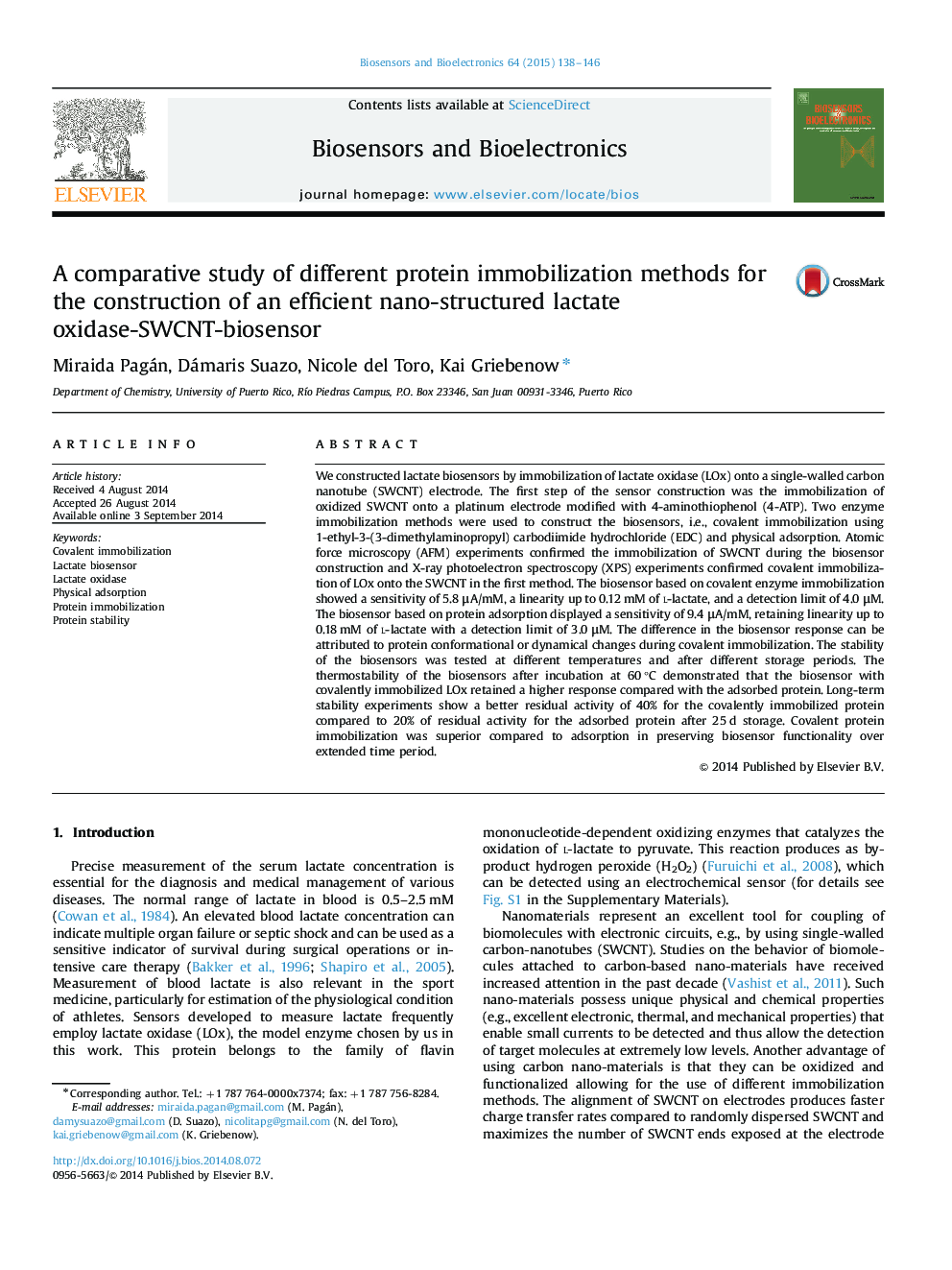| کد مقاله | کد نشریه | سال انتشار | مقاله انگلیسی | نسخه تمام متن |
|---|---|---|---|---|
| 7232861 | 1470967 | 2015 | 9 صفحه PDF | دانلود رایگان |
عنوان انگلیسی مقاله ISI
A comparative study of different protein immobilization methods for the construction of an efficient nano-structured lactate oxidase-SWCNT-biosensor
دانلود مقاله + سفارش ترجمه
دانلود مقاله ISI انگلیسی
رایگان برای ایرانیان
کلمات کلیدی
موضوعات مرتبط
مهندسی و علوم پایه
شیمی
شیمی آنالیزی یا شیمی تجزیه
پیش نمایش صفحه اول مقاله

چکیده انگلیسی
We constructed lactate biosensors by immobilization of lactate oxidase (LOx) onto a single-walled carbon nanotube (SWCNT) electrode. The first step of the sensor construction was the immobilization of oxidized SWCNT onto a platinum electrode modified with 4-aminothiophenol (4-ATP). Two enzyme immobilization methods were used to construct the biosensors, i.e., covalent immobilization using 1-ethyl-3-(3-dimethylaminopropyl) carbodiimide hydrochloride (EDC) and physical adsorption. Atomic force microscopy (AFM) experiments confirmed the immobilization of SWCNT during the biosensor construction and X-ray photoelectron spectroscopy (XPS) experiments confirmed covalent immobilization of LOx onto the SWCNT in the first method. The biosensor based on covalent enzyme immobilization showed a sensitivity of 5.8 μA/mM, a linearity up to 0.12 mM of l-lactate, and a detection limit of 4.0 μM. The biosensor based on protein adsorption displayed a sensitivity of 9.4 μA/mM, retaining linearity up to 0.18 mM of l-lactate with a detection limit of 3.0 μM. The difference in the biosensor response can be attributed to protein conformational or dynamical changes during covalent immobilization. The stability of the biosensors was tested at different temperatures and after different storage periods. The thermostability of the biosensors after incubation at 60 °C demonstrated that the biosensor with covalently immobilized LOx retained a higher response compared with the adsorbed protein. Long-term stability experiments show a better residual activity of 40% for the covalently immobilized protein compared to 20% of residual activity for the adsorbed protein after 25 d storage. Covalent protein immobilization was superior compared to adsorption in preserving biosensor functionality over extended time period.
ناشر
Database: Elsevier - ScienceDirect (ساینس دایرکت)
Journal: Biosensors and Bioelectronics - Volume 64, 15 February 2015, Pages 138-146
Journal: Biosensors and Bioelectronics - Volume 64, 15 February 2015, Pages 138-146
نویسندگان
Miraida Pagán, Dámaris Suazo, Nicole del Toro, Kai Griebenow,